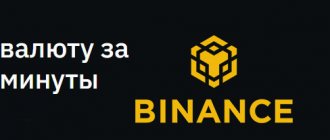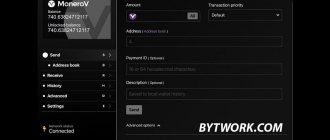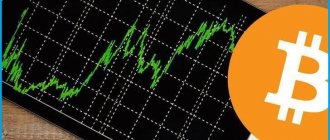Venezuela, a country that has never been one of the most innovative economies, has surprisingly remained at the top of the world's cryptocurrency news. The Bolivarian Republic quickly went from denying them and persecuting miners to introducing government regulation and launching the world's first national virtual coin project. It would seem that this speaks positively about the country, but these achievements did not come from an easy life. The active development of mining for Venezuelan citizens has become a tool for survival in conditions of hyperinflation, and the launch of their own cryptocurrency project, El Petro, was largely a response to external sanctions and restrictions.
Petro or PetroDollar?
PetroDollar logo.
Beginners and those who do not follow the news often confuse PetroDollar (XPD) and Petro (PTR, El Petro).
Strictly speaking, both assets are classified as tokens, not cryptocurrencies. They have a lot in common beyond the word in the name.
The value of PetroDollar (XPD) and Petro (PTR) is backed by oil and natural gas.
PetroDollar is issued by Signal Capital Management, one XPD coin is equivalent to 13.5 barrels of oil. The token is actively traded on Cryptopia and Yobit and has a rate of about 0.01 USD. The US government is loyal to this coin, while the Trump administration is not loyal to Petro.
It can be said that PetroDollar (XPD) and Petro (PTR) are competitors in the niche of oil-backed digital assets.
Forecast for the future
According to the strategy of the Venezuelan government, the El Petro rate should be equal to the cost of 1 barrel of oil over the past 24 hours. Analysts predict that the release of a new crypt can accelerate rapid inflation. Taking into account the large-scale economic crisis in the country, there is a high risk of the El Petro rate falling along with the fiat currency rate.
The project has a number of disadvantages:
- America's negative attitude;
- full state control;
- centralization;
- lack of a reliable guarantor, anonymity and a specific blockchain platform.
After “uploading” tokens to crypto exchanges, there are likely two ways for the situation to develop:
- Course collapse. Immediately after listing, most coin holders will want to exchange El Petro crypto on trading exchanges.
- After a downward trend and further correction, there is a high risk of artificially pumping up prices on the part of market makers from Russia and Asia.
In any case, working with the Venezuelan asset El Petro requires strict adherence to risk management. You should not invest more money than you can lose. With this token, full of contradictions and inaccuracies, only an experienced trader who can instantly navigate the market situation can find a common language.
If you liked the material, you can share it with your friends.
What is Petro?
The table shows the main characteristics of the national currency of Venezuela – El Petro.
| Official site | elPetro.gob.ve |
| Trading ticker | PTR |
| Issue start date | 20.02.18 |
| Maximum emission | 48,000,000 PTR |
| Exchanges for buying and selling | No |
| Github | github.com/lochaorg/Petro |
| Block Explorer | blockchain.gob.ve |
Home page elPetro.gob.ve.
The official website has an interface in Spanish and English. A short WhitePaper is presented describing the main advantages of the blockchain; there is no Roadmap or information about the developers.
Nicolas Maduro.
El Petro cryptocurrency (PTR) has the following features:
- Promoted by the Government of Venezuela. President Nicolas Maduro officially announced the coin's launch on December 3, 2017, and has since given numerous interviews about the technology, security, and benefits of this digital currency.
- A specialized organization, the Main Directorate for Cryptocurrency, deals with the maintenance and development of blockchain.
- The cost of 1 PTR token is equivalent to 1 barrel of Venezuelan oil. In the future, a scheme will be proposed to provide natural gas and other minerals.
- Petro is accepted in Venezuela as a legal means of payment. In tokens you can receive loans, pay taxes, government duties, and so on.
The Venezuelan government is counting on Petro to help improve the economy, which is suffering from US sanctions and bolivar inflation.
From this video you can learn more about the situation in Venezuela.
There are several questionable points that potential investors need to pay attention to:
- During the ICO, PTR tokens were not sold for the Venezuelan bolivar, and this clearly emphasizes the status of the national fiat currency.
- Initially, it was planned to launch a cryptocurrency that could be mined. This would give the Venezuelan population an additional source of income. The government organized a Register of Potential Miners, and more than 50,000 people wishing to make money from El Petro mining were added there. Then mining was abandoned.
The Venezuelan government has repeatedly changed its plans for El Petro, and the choice of technology hasn't gone smoothly either.
What technology was used to create the El Petro cryptocurrency?
The developers were going to use the Ethereum platform, the ERC 20 standard, to create the token. This information appeared in the media, and many reviews of the El Petro cryptocurrency indicated that it was based on Ethereum. This is wrong. Just like the wtc cryptocurrency.
Subsequently, the decision was changed and the NEM platform was chosen as the basis. WhitePaper argues this as follows:
- The cost of smart contracts for tokens and transactions in the Ethereum system is higher than in NEM and even than the zclassic rate.
- Ethereum can process up to 20 transactions per second, which according to El Petro developers is not fast enough. NEM is faster than Ethereum. The NEM Catapult version, written in C++, is capable of processing 4,000 transactions per second, which is comparable to the throughput of international payment systems. For example, Visa processes about 1,000 transactions per second.
- There is not enough interaction between tokens in the Ethereum system. It’s not very clear what they wanted to say by this, because tokens can be exchanged inside many multi-currency wallets.
- The API of the NEM platform is simpler than that of Ethereum. NEM develops in Javascript and other popular programming languages, making it quick and easy to create applications for El Petro. To work on Ethereum, a developer must be able to program in Solidity. This language has some features, for example, it will be difficult for a beginner to ensure high security of the system, and the work as a whole will take more time.
- The Nem Foundation expressed interest in the Venezuelan government's project and offered technical assistance and assistance in expanding the El Petro community.
NEM differs from Ethereum in many ways, including the consensus mechanism:
- In Ethereum, protection from hacker attacks and double spending is implemented through Proof of Work (PoW), that is, proof of the useful work that a miner performed to include a transaction in a block. It is planned to switch to Proof of Stake (PoS), the so-called. proof of ownership share. Under PoS, all owners of wallets with a positive balance receive rewards. Also a good example of steemit how to make money on PoS.
- In NEM, consensus is achieved using the Proof of Importance (PoI) algorithm. Priority is given to active users who conduct many transactions and have coins in their wallet.
According to the Venezuelan government, PoI is a more convenient option for people than PoW or PoS.
Roadmap Petro, ICO
The Road map has not been published on the official website; there is no information about the government’s plans after the end of the ICO.
ICO is carried out according to this scheme.
| date | Event |
| From 20.02.18 to 19.03.18 | Sale at a discount, pre-sale. |
| From 20.03.18 | Crowd sale, free sale. |
During the pre-ICO, 38,400,000 PTR were sold, divided into 5 lots:
- Four lots of 5,000,000 PTR each.
- One lot in the amount of 24,000,000 PTR.
The amount of the discount is not specified. On the first day of sales, the El Petro cryptocurrency collected 735 million USD, investors remained anonymous.
This video suggests that El Petro was sponsored by Russian oligarchs.
There are constantly reports in the news that Venezuela is actively consulting with Moscow and awaiting investment support.
Information 2bitcoins.ru.
Some conspiracy theorists see a secret meaning in the fact that the El Petro icon is in many ways similar to the ruble sign.
Ruble.
El Petro.
55% of the money received is planned to be sent to the Sovereign Fund, which is involved in stabilizing the economic situation of Venezuela. Another 15% will be invested in the development of blockchain technology. What will happen to the remaining 30% is unknown.
After the end of the ICO, the tokens will be listed on cryptocurrency exchanges.
Considering that 1 PTR = 1 barrel of oil, the El Petro to dollar rate should be around 74 USD. Tokens are sold for 60 USD.
Reviews from other countries
Foreign reviews of Petro were equally mixed. Before the release of the coin, 133 countries, including China, expressed their intention to invest in this crypt. Also earlier this year, Brazil, Poland, Honduras, Norway, Denmark and Vietnam said they would accept Petro in exchange for food and medicine.
Other states have expressed more suspicious and sometimes condemnatory reactions in this regard. US Senators Robert Menendez (New Jersey) and Marco Rubio (Florida) wrote an open letter on this issue to the Secretary of the US Treasury Steven Mnuchin , which states the following:
“Maduro has proven that he will use any means available to him to further his authoritarian goals... Thus, we are concerned that the introduction of cryptocurrency will allow Maduro to engage in transactions with foreign creditors and bondholders in the United States that could undermine the intent of the US sanctions.”
American President Donald Trump has gone so far as to ban Americans from investing in or buying Petro. The US government not only warns that the initial ICO is a scam, but also claims that supporting Petro contributes to the violation of international sanctions. By the way, we recently managed to trace the connection between Trump and Ripple .
How and where to buy Petro cryptocurrency?
Naturally, the listing on exchanges has not yet taken place, and there is no PTR in exchangers. You can only buy El Petro from the developers.
The screenshot shows a Tweet from the Venezuelan government, which indicates the details and minimum amounts for transfer:
- In bitcoins you can send from 0.0001 BTC.
- On air – from 0.05 ETH.
To purchase El Petro cryptocurrency, you need to do the following:
- Log in to the official website elPetro.gob.ve and click Buy on the main page.
- You will need to select the type of account, corporate (legal entity) or individual (individual).
- Then provide identification documents, for example, a civil passport.
After verification, details for transferring payment for tokens will appear.
***
The country is creating infrastructure for Venezuela’s future breakthrough into the leaders of the global crypto market.
We should pay tribute to the Venezuelan authorities, who with enviable frequency demonstrate a unique ability to find ways out of the most difficult political and economic situations. Now it is too early to talk about the success or failure of the El Petro project, but it does make it possible to partially solve several of the most pressing problems of the country’s economy: hyperinflation, a lack of confidence in the national currency Bolivar, narrowing access to foreign currencies due to sanctions and the threat of default. And from the point of view of legalizing the activities of Venezuelan miners, which were previously illegal, the new oil cryptocurrency seems to be an elegant solution. The country is creating infrastructure for Venezuela’s future breakthrough into the leaders of the global crypto market. The example of the Bolivarian Republic turned out to be contagious. In February, Iran announced the launch of its own oil cryptocurrency. There are similar projects in other countries, including such exotic ones as the Marshall Islands or Belarus.
. A token is a unit of account designed to represent a digital balance in some asset, such as a cryptocurrency.











